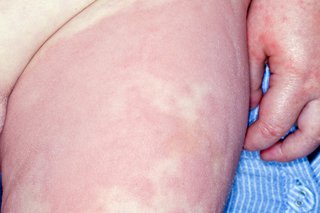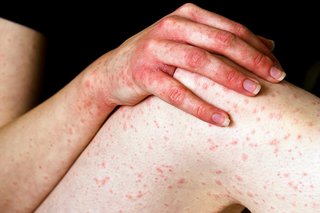Hives are raised, itchy bumps on your skin that appear like a rash. They usually settle down within a few minutes to a few days. You can often treat hives yourself.
Check if you have hives


Hives can be different sizes and shapes, and appear anywhere on the body in both adults and children.
The rash is often itchy and sometimes feels like it's stinging or burning.
A pharmacist can help with hives
Your pharmacist can give you advice about antihistamine tablets to bring down your hives rash.
Tell your pharmacist if you have a long-term condition – you might not be able to take antihistamines.
They also may not be suitable for young children under 2. Ask your pharmacist for advice before giving your child any antihistamines.
Non-urgent advice: Talk to your GP if:
- the symptoms do not improve after 2 days
- you're worried about your child's hives
- the rash is spreading
- your hives keep coming back – you may be allergic to something
- you also have a high temperature of 38 degrees Celsius or higher and feel generally unwell
- you also have swelling under the skin – this might be angioedema, a condition usually caused by an allergic reaction
Urgent advice: Go to your nearest emergency department or call 999 or 112 if you have:
- difficulty breathing
- difficulty swallowing
- dizziness or fainting
- feeling sick or vomiting
- an increased heart rate
- rapid and severe swelling of the face, mouth or throat
These could be signs of a severe allergic reaction, such as anaphylactic shock.
Treatment for hives from a GP
Your GP may prescribe corticosteroids, menthol cream or stronger antihistamines.
If your hives do not go away with treatment, you may be referred to a skin specialist (dermatologist).
You cannot always prevent hives
Hives happen when something causes high levels of histamine and other chemicals to be released in the skin. This is known as a trigger.
Triggers can include:
- food
- pollen and plants
- insect bites and stings
- chemicals
- latex
- dust mites
- heat – work and sleep in a cool room and wear loose, lightweight clothes
- sunlight, exercise or water
- medicines – speak to a GP if you have an allergic reaction
- infections
- emotional stress
Content supplied by the NHS and adapted for Ireland by the HSE
